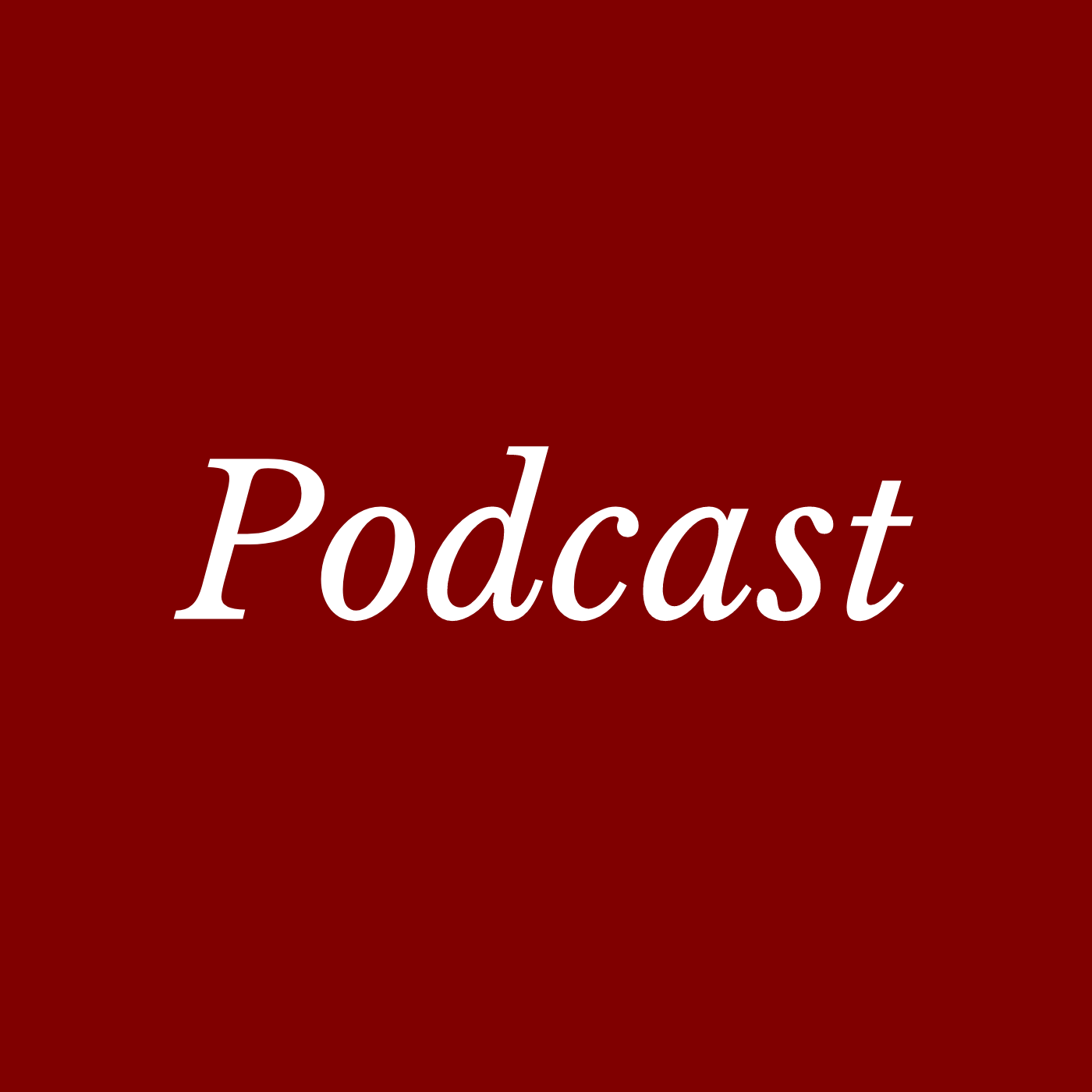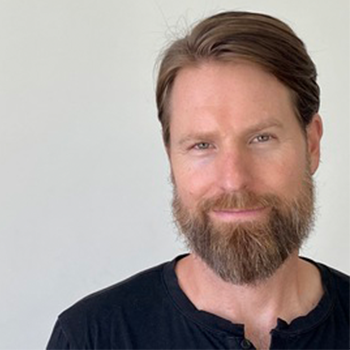george grombacher 0:02
One left foot. This is George G. And the time is right. Welcome. Today’s guest strong, powerful. Dr. Charles Brenner. Dr. Charles, are you ready to do this? I am ready. All right, let’s go. Doc Charles is a PhD. He’s the Chief Scientific Adviser with chromadex to global bioscience company dedicated to healthy aging. Delivering Nyah Jin Seoul active ingredient. Dr. Charles, tell us a little about your personal life more about your work, why you do what you do. Okay, I think I can do that. Let’s see. I’m a 61 year old guy. I live in Pasadena, California.
Dr. Charles Brenner 0:38
I run a research group and department at City of Hope National Medical Center in Duarte, California. Our department is called the Department of diabetes and cancer metabolism. And essentially what I do every day every, you know, 24/7 is I work on the central catalyst of metabolism, nicotinamide, adenine dinucleotide. NAD. So it’s the wiring of every cell in your body. And we discover pathways of synthesizing NAD we discover diseases and conditions in which the NAD system is disturbed, and we try to figure out ways to improve human health by modulating NAD.
Unknown Speaker 1:28
Love it. And and you enjoy that work? I sure do. Yes.
Unknown Speaker 1:34
So I’m fascinated. And I’m super grateful that there are people like you who do the kind of work that you do.
Unknown Speaker 1:40
You discovered? Tell me, tell me what it is you discovered? And I’m curious.
Unknown Speaker 1:47
Were you looking for it? How does the discovery process happen? Yeah. So I was minding my own business working on an enzyme that forms NAD the central catalyst of metabolism. I was doing that that work in yeast. And it occurred to me that when I was trying to figure out how the enzyme worked, that I could learn some new things about how NAD is made. And we suggested at that time back in around 2003, four, so about 20 years ago, that there might be another biosynthetic pathway to make NAD another fundamental building block that can be turned into NAD. And in so doing, we discovered the vitamin activity of nicotinamide Dr aside. And so turn, there were no two known vitamin precursors of any D at that, at that time, and we discovered a third vitamin precursor and the genes that are used to convert nr into NAD coenzymes. And we haven’t looked back since we found a lot of things that were not well understood about this fundamental catalyst of metabolism.
Unknown Speaker 3:08
So you discover a third precursor. What does that mean? In a more simplified version? Right? So I’m back in 1938, there was a scientist named Conrad LVM. That discovered that nicotine amine and nicotinic acid
Unknown Speaker 3:31
can prevent pellagra. And then we later understood that both of those molecules are small molecules, we call them vitamins that can get into cells.
Unknown Speaker 3:45
And that cells can use either nicotinic acid or nicotine or mide. To make NAD
Unknown Speaker 3:53
vitamins depend upon genes and enzymes to convert these very small molecules into coenzymes. And we discovered that nr, nicotinamide, right beside is yet another vitamin precursor of NAD. And the interesting thing about nr, is that when the NAD system comes under attack, for example, in heart failure, neurodegeneration when the when DNA is damaged and has to be repaired. The jeans that I discovered the nicotine or MyDrive aside, kinase genes get up regulated. And so it looks as though damaged cells and cells that need NAD to restore their resilience depend on the NR pathway to regenerate NAD.
Unknown Speaker 5:06
So you said that it’s able to get into the cell. And so that suggests to me that that’s not an easy thing for just because I introduce something into my body doesn’t mean it can actually get into the cell. Well, right. So when, you know, NAD is a central catalyst metabolism and all of your cells, George, and it’s also the central catalyst to metabolism in all of the cells of an avocado or, or, or a cow, or whatever it is that you choose to have for lunch. When we eat whole foods with a small w and a small f, I’m not making any
Unknown Speaker 5:46
grocery store endorsements when we eat unprocessed foodstuffs. There’s macronutrients and the food, protein, fat and carbohydrate. And there’s also micronutrients in in the food. And so the NAD that’s in plant and animal products breaks down into precursors. And then those precursors go into cells in order to regenerate NAD. So you might say to me, gee, if NAD is the central catalyst of metabolism, why don’t I take NAD as a supplement?
Unknown Speaker 6:26
And you could, but NAD would break down into nr nr is the largest piece of NAD that can get into cells. There are people that have tried to popularize and mn as a sub as a NAD boosting molecule. But no man actually has to be broken down to nr before it can get into cells. So nr is the biggest piece of of NAD that can get into cells. And that’s part of the value proposition of it of nr. Got it. All right. So we want it in our cells. We need it. Yes, and, and
Unknown Speaker 7:07
although it’s a catalyst, which means you know, a little can go a long way.
Unknown Speaker 7:13
The NAD coenzymes come under attack in conditions of metabolic stress. So for example,
Unknown Speaker 7:23
when you drink alcohol, the metabolism of alcohol converts NAD plus to NADH. That accumulation of NADH can lead to things like alcoholic fatty liver and
Unknown Speaker 7:43
reductive stress. When we overfeed a mouse in order to give it obesity, type two diabetes and those types of metabolic diseases, we see an attack on the NAD system. When DNA is damaged, NAD is used to repair the damage and NAD system comes under attack. And then very commonly in things like infection and inflammation. If you work around people, I like to say if you you know, are enter rooms that have you know, 2025 people in them five days a week, you’re likely to be reexpose to coronaviruses every week.
Unknown Speaker 8:30
The susceptibility to viruses not only Corona viruses, but other respiratory viruses depends in part on the NAD system. NAD system comes under attack, when we’re activating our innate immune system to fight off these viruses. And so the thinking is that a higher NAD status protects you from many of the conditions of metabolic stress that you encounter in your life.
Unknown Speaker 9:04
Got it.
Unknown Speaker 9:05
So our cells need it. When we are overweight, dealing with viruses or disease, it puts a strain on the system. So the more we can introduce in a way that’s going to actually work, the stronger we’re going to make ourselves right so you’re basically you’re boosting your your NAD status
Unknown Speaker 9:30
in order to enhance your resiliency and your resistance to
Unknown Speaker 9:37
metabolic stresses. Sun you know, things that we
Unknown Speaker 9:42
take for granted and more or less need like we don’t technically need sunlight but
Unknown Speaker 9:51
you know, Sun is with with sunscreen is good for us.
Unknown Speaker 9:59
But
Unknown Speaker 10:00
But sunlight will damage DNA. Oxygen is essential for life. But oxygen leads to reactive oxygen species that actually churn one of the four NAD coenzymes NADPH. And so
Unknown Speaker 10:16
the micro nutrient component of our of our diet can be enhanced by an nr supplement. And as you said, I’m the Chief Scientific Adviser of Chrome and x, which licensed that technology from from Dartmouth College for uses of WnR. And produced, you know, a supplement that has been Safety tested. It’s a new dietary ingredient can’t be taken off the market. And in addition to being available as a dietary ingredient, it’s also being tested in these disease models in which NAD can come strikingly under attack.
Unknown Speaker 10:59
I think that that’s, it’s exciting. And I think I’m tracking.
Unknown Speaker 11:04
So
Unknown Speaker 11:05
it’s, it’s great for our immune system, and it has healthy aging components, or it’s really one of the same. Yeah, so, you know, aging is a series of challenges. I mean, I like to think that aging is a privilege. I don’t use the word anti aging, it doesn’t really make sense to me, it’s sort of a category of a lot of stuff. That’s fake. And, you know, nicotinamide, right beside is a science based product, product. It’s a, you know, vitamin precursor of any D. So we think that there’s a role for nr in healthy aging and resiliency and
Unknown Speaker 11:44
enhancing repair capacity.
Unknown Speaker 11:47
It’s widely reported that NAD declines in aging, whether that is a summation of all of the different
Unknown Speaker 11:56
episodic attacks on NAD, or part of the aging program is not entirely understood. But we see in many different models of aging and disease in animal systems that NAD comes under attack, and that N RS is protective. And now there’s human clinical trials in a variety of diseases and conditions in which nr is producing positive results. So in our
Unknown Speaker 12:28
increases cerebral blood flow in Parkinson’s, that was such a promising trial, that when it concluded, the authorities in Norway wanted to make sure that everybody that was on placebo, and everybody that was on nr had access to nr in order to better manage their, their condition. There’s been indications of positive results in body composition, in lowering inflammatory markers, potentially, in reducing fatty liver
Unknown Speaker 13:12
potentially improving blood pressure management, and people with that have moderately elevated blood pressure. So it’s a very exciting molecule that is getting a lot of traction in the research world. Yeah, it sounds like it.
Unknown Speaker 13:28
I don’t know that I’ve ever heard aging as a privilege, for words strung together like that. But but but it certainly makes sense.
Unknown Speaker 13:35
I strongly believe that way, you know, you know, they first of all, there’s a there’s a developmental
Unknown Speaker 13:43
slash programs component of, of aging, If we learned anything, from model systems, the most powerful
Unknown Speaker 13:54
mutations in mice that give you very long lived animals are in growth hormone signaling. So they’re shrimpy little dwarf mice that cannot
Unknown Speaker 14:11
reach a normal size. And they don’t.
Unknown Speaker 14:17
They’re sexually
Unknown Speaker 14:20
incapable. So they, they don’t go through a proper puberty and they’re, they they can’t reproduce and they’re tiny, and they can’t fend for themselves. Those are extremely long lived
Unknown Speaker 14:34
mice. And so we know that there’s a the genetics of aging is very difficult, if not impossible, to separate from the genetics of development. So we know that part of aging is programmed that you know, laboratory mice live you know, two or three years and naked mole rats which have a basically the same size and
Unknown Speaker 15:00
Body plans live 10 times as long. Why, because naked mole rats evolved to maintain their maturity and their power for 10 times as long as mice, humans, you know, we get to live to 70 or 80 or 90 or 100 years, occasionally up to 120. So we have a great gene set, and what we are trying to do in healthy aging is achieve our, you know, genetically encoded longevity, and to kind of square the curve, which means to not experience long, you know, parts of our life in which we are not capable of taking care of ourselves. So the idea of aging better is to try to maintain fitness and muscle mass, eat well be socially connected, and then try to do whatever you can in order to maintain resiliency and repair capacity. And we think that nr is part of that healthy lifestyle. That makes a lot of sense. And in your work, and I suppose in in scientific research in general, I’m curious, do you run the risk of of getting frustrated? Because you don’t find breakthroughs? Or are you constantly finding new clues or different pathways to to to kind of explore? So I guess? Do you run the risk of getting frustrated and wanting to quit ever? How does that work?
Unknown Speaker 16:40
With it, the thing is, you can’t be too attached to your hypotheses, I find the people you know, in, in biology, that are most attached to their hypotheses. And they, they use like title case, a lot, like I’m testing the information theory of aging, or whatever.
Unknown Speaker 17:04
Those are the people that
Unknown Speaker 17:09
they’re just sort of attached to a result coming out a particular way. If you really are trying to discover objective truth, then you set out to disprove your own hypotheses. And you have to have a, you know, testable model, that could be falsifiable. And so when we look at things that way, we’re not really
Unknown Speaker 17:39
frustrated so much as peeling the onion, and, you know, trying to discover what is what is underneath. So biology is really complicated. I like to tell people that rule one of biology is that there’s no violation of anything in chemistry or physics. And rule two is that everything is encoded, and subject to selection for fitness and, you know, encoded in, in DNA. And, but beyond those two rules,
Unknown Speaker 18:17
almost anything goes in biology. And so you have to keep an open mind. And you have to be willing to have your pet ideas disproven. And so we do set out in our, in our laboratory to test our hypotheses and it’s only by doing so that we can find things that are that really hold up well.
Unknown Speaker 18:40
If we could all just adopt that mindset doctor.
Unknown Speaker 18:44
It’s, it’s, it’s, it’s, it’s important, right? It to not become tribal and, you know, to, to attach to,
Unknown Speaker 18:54
to pet ideas. But, you know, what we’ve learned is, is that there’s a terrific book that I reviewed by professor at University of Alabama, Alabama at Birmingham named Steven Halstead.
Unknown Speaker 19:12
In the end, Stephen outsert, has pointed out that bigger animals generally live longer than then smaller animals. But then you can kind of correct it, you can see what is a really good ager for its size versus not so good in an age of herd size. So So human beings are not the biggest primates, right? Gorillas are way bigger than than humans, but humans live longer. Humans are better agers than chimpanzees are better agers than then gorillas, just like naked mole rats are better agers than mice. So it turns out that we can learn things from creatures like human beings that age really well. There’s a certain things that we can
Unknown Speaker 20:00
Learn from mice, but certain things that we can’t extrapolate from mice. And even though I started out, I told you 20 years ago, I was working on yeast. And when we discovered the nicotinamide right beside kinase pathway and the vitamin activity of nr,
Unknown Speaker 20:16
we could extend lifespan in yeast 2007, you know, with nicotinamide right beside but I never claimed that nr is going to be a life extending compounded human beings on the basis of a yeast experiment, that would be more or less ridiculous to suggest that yeast anticipates the cause of aging in animals. And because yeast, you know, existed before there were any animals. So you know, we try to keep an open mind, we try to learn from nature, and do experiments that will illuminate the way things work, we also don’t get out out ahead of our skis or skis. So we know very confidently that in our safe, we know that it has profound value in animal models, and it has a lot of promise and in human disease and conditions. And that that’s why we’re so excited by it.
Unknown Speaker 21:13
Love it. Well, Dr. Brennan, thank you so much for coming on. Where can people learn more about you? And how can how can we take advantage of our NAD? Sure, well, if people have questions for me, they can find me on Twitter at Charles M. Brenner.
Unknown Speaker 21:32
They can look up our laboratory at Brenner lab.net.
Unknown Speaker 21:39
Laboratory, as I said, is that city of hope in California, and true nitrogen is the patented safety tested nicotinamide right beside and they can find that@turnitin.com. So thanks so much. Excellent. Well, if you enjoyed as much as I did show Dr. Brenner, your appreciation and share today show the friend who also appreciates good ideas. Find Charles on Twitter under Charles M. Brenner, it’s ch ar l e. S letter M, B, r e n n e. AR find them also at Brenner. labs.net. Brenner, lab.net. Brenner. lab.net. And then true nitrogen.com. I’ll link all those in the notes of the show. Great. Thanks. Thanks again, Dr. Brenner. My pleasure. Thank you. And until next time, remember, do your part by doing your best
Transcribed by https://otter.ai






